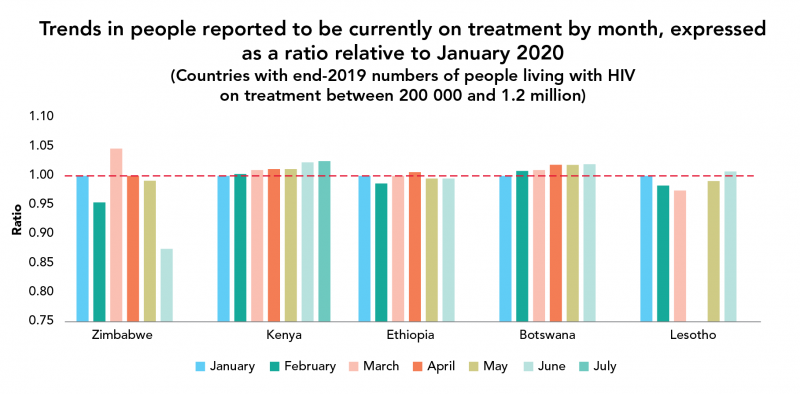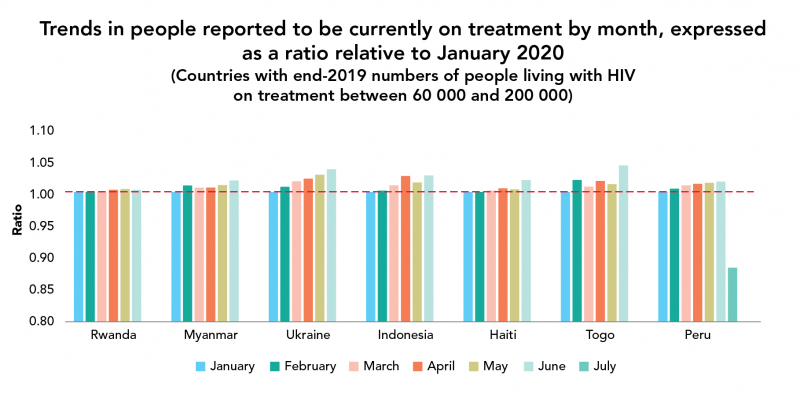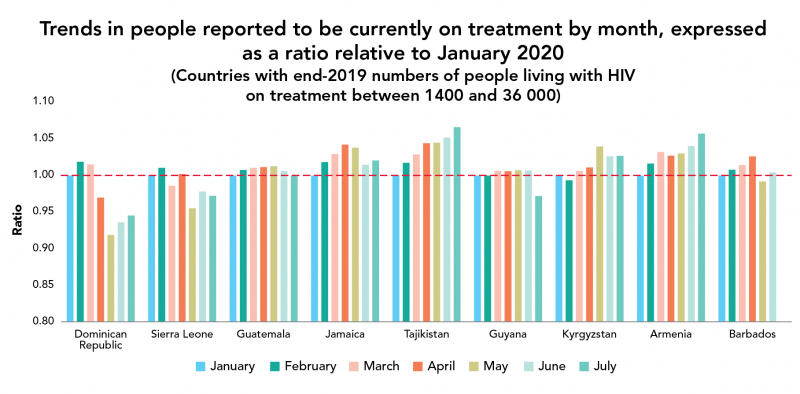While recent data collection has shown that the COVID-19 pandemic has had a significant impact on HIV testing services, the impact on HIV treatment is less than originally feared.
As of August 2020, the UNAIDS, World Health Organization and United Nations Children's Fund data collection exercise to identify national, regional and global disruptions of routine HIV services caused by COVID-19 had collected treatment data from 85 countries, of which 22 countries reported data over a sufficient number of months to enable the identification of trends.

To measure the impact of COVID-19 on HIV treatment services, a ratio was calculated relative to January—for example, if the number of people on treatment in April was the same as in January, the ratio is 1; if there was a decline, the ratio is less than 1.
Only five countries reported monthly declines in the number of people on treatment after April—these include Zimbabwe in June, Peru and Guyana in July, the Dominican Republic in April, and Sierra Leone in May through to July. The remaining 18 countries did not show a decline and some countries showed a steady increase (e.g. Kenya, Ukraine, Togo and Tajikistan).

One challenge in interpreting trends in the number of people currently on treatment is that many countries have a three-month lost-to-follow-up definition. This means that people who disengaged from treatment in April may only be counted as not on treatment in July.
Among the 22 countries with trend data on numbers newly initiating treatment, all countries except Jamaica showed declines for at least one month or more relative to January. Only around eight of those countries showed a rebound in the number of people newly initiating treatment between January and July.






